CHINESE CHARACTERS AND PRINTING
Before printing was invented.
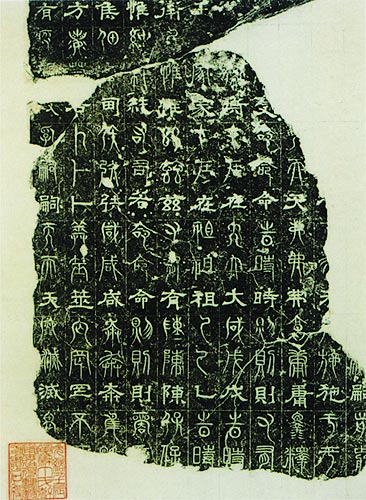 |
Since the Eastern Han Dynasty, stele inscriptions were widely used to publicize authoritative characters and classic books. An inscribed scripture in three styles of writing. |
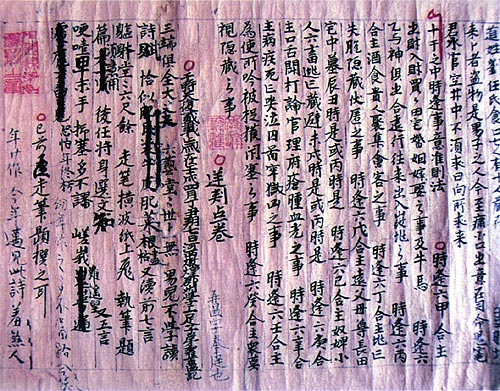 |
Before printing was invented, all books were copied by hand, which was time-con-suming and vulnerable to mistakes. Manuscripts from Dunhuang Grottoes. |
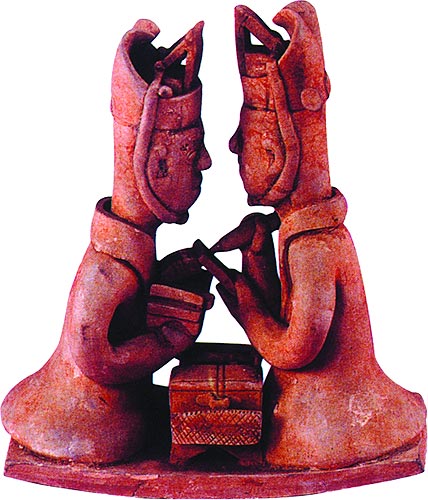 |
Copier figures of Jin (265-420). Ancient Chinese worked in pairs to copy books, one to copy and one to proofread. |
 |
Tang scripts sheltered in the Stele Forest of Xi'an. |
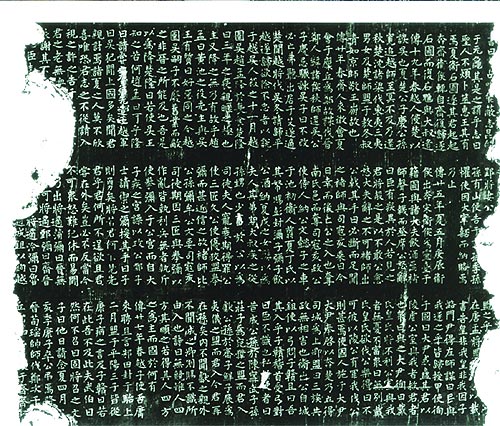 |
Tang scripts sheltered in the Stele Forest of Xi'an. |
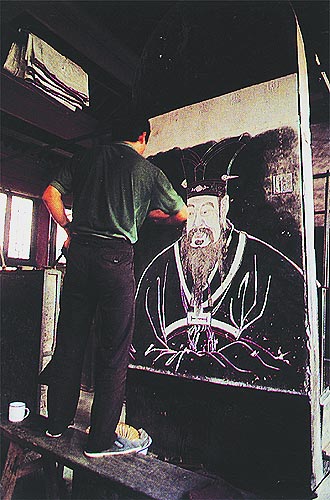 |
The spead of stele incriptions soon led to another invention: Ink Rubbings. This was done by placing moistened paper on the stele, and then applying ink on the paper so that the inverse characters could stand out. A forerunner of block printing, this ancient technique provides copies true to the original. It is still widely used today. |
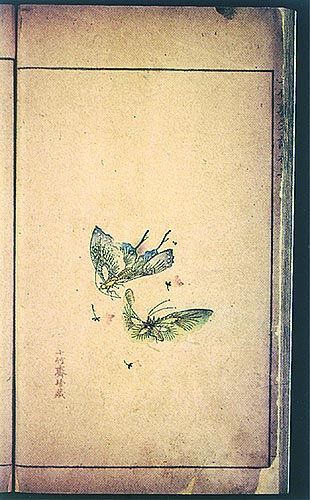 |
Other techniques like overprinting, multicolor overprinting and embossing were invented one after another, constantly pushing block printing to new levels. |
 |
Other techniques like overprinting, multicolor overprinting and embossing were invented one after another, constantly pushing block printing to new levels. |
 |
Other techniques like overprinting, multicolor overprinting and embossing were invented one after another, constantly pushing block printing to new levels. |
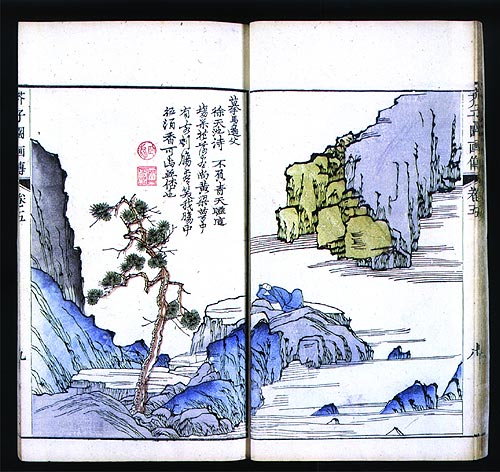 |
Other techniques like overprinting, multicolor overprinting and embossing were invented one after another, constantly pushing block printing to new levels. |
 |
As one of the four greatest inventions of ancient China, block printing came into being 1300 years ago. Above is the oldest printed work of China that can be dated(868): Diamond Sutra, Tang Dynasty (618-907). |
 |
In the Song Dynasty(960-1279), inscribers of printing blocks were often calligraphers. Books printed at this time appealed not only to the mind, but to the aesthetic sense as well. A book printed in the Song Dynasty. |
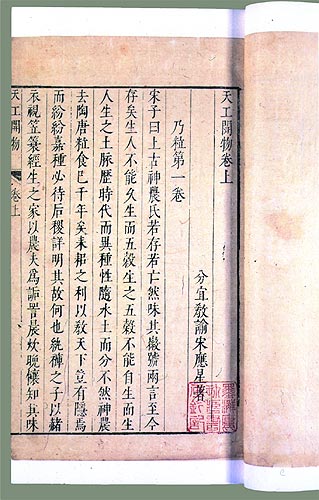 |
A letterform created specially for block printing: the Song Style. Its inventors are unknown, but its advantages are obvious. This letterform is still the major book letter used today. A book printed in the Song style. |
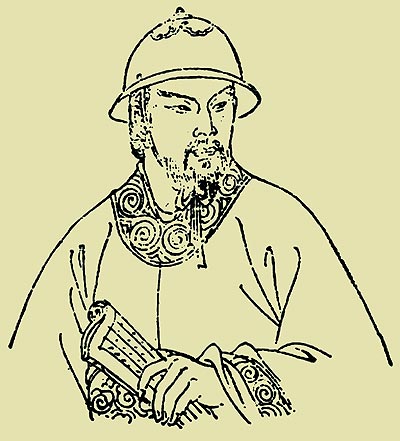 |
Around 1295-1300, Wang Zhen invented wooden type printing, and a Chinese-friendly type arranging system with revolving cases. A portrait of Wang Zhen. |
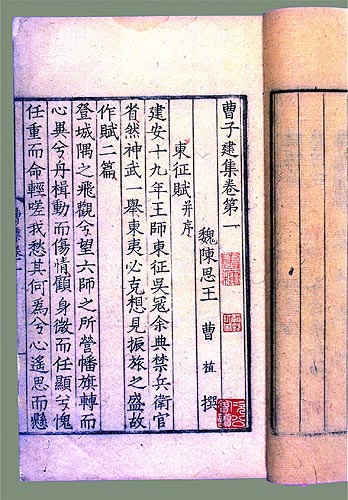 |
Various forms of metal type were also invented afterwards, enriching priting technologies immensely. |
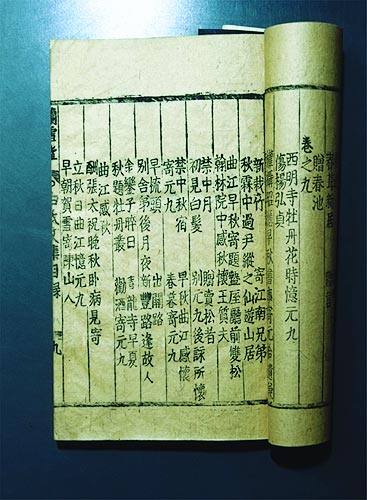 |
Various forms of metal type were also invented afterwards, enriching priting technologies immensely. |
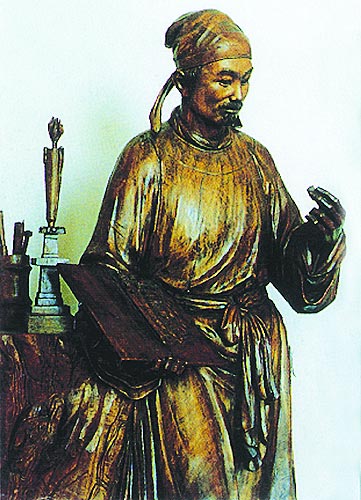 |
Portrait of Bi Sheng
|
 |
Process of clay-tupe printing. How to make the printing type: mold some small clay pieces, stamp letters on them, bake until hard, and then arrange them in an iron case. |
CHINESE CHARACTERS AND INTELLINGCE
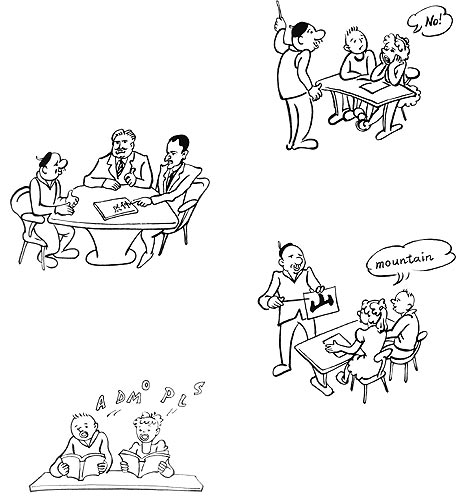 |
An experiment was carried out by American scientists in 1971 on eitht students with reading difficulties. After learning the English pronunciations of 30 Chinese characters, the children easily recognized and memorized the characters. Research shows that Chinese characters can stimulate both right-brain and left-brain thinking. |



















